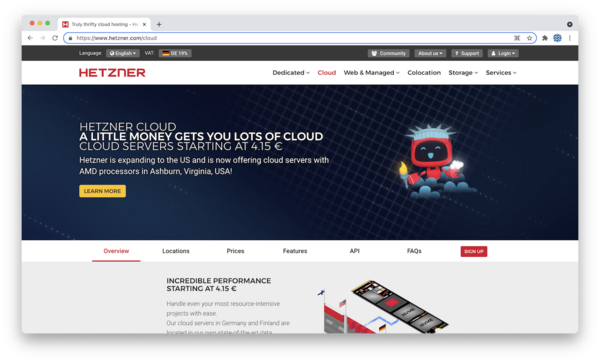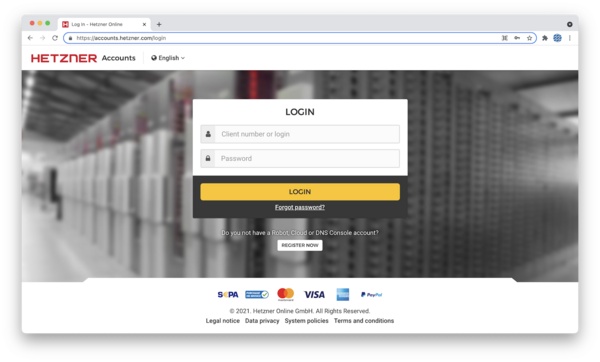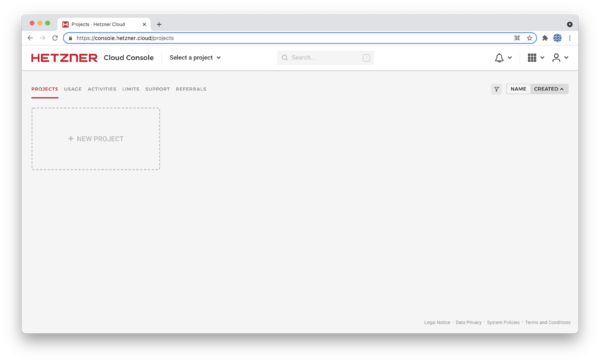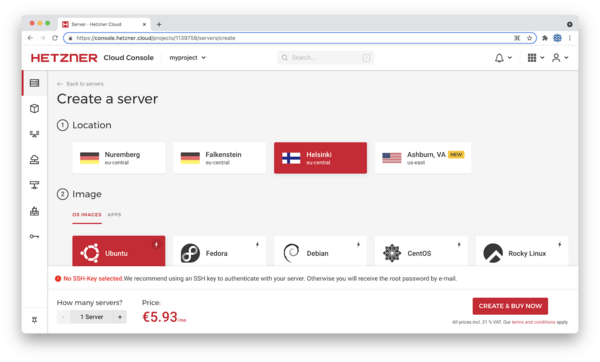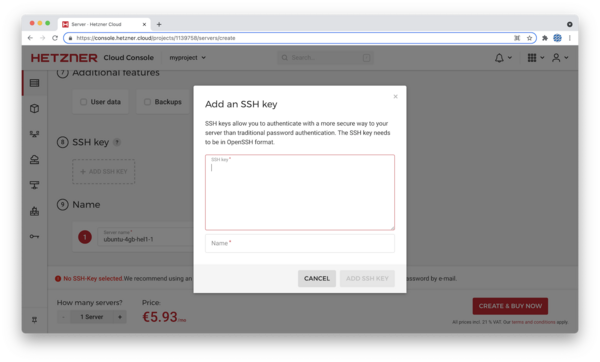Difference between revisions of "Set up a Virtual Private Server"
| Line 38: | Line 38: | ||
# firewalls - no selection | # firewalls - no selection | ||
# additonal features - no selection | # additonal features - no selection | ||
# ssh keys - added my public key | # ssh keys - added my public key (see below)* | ||
# name of server - parallel-wiki | # name of server - parallel-wiki | ||
If public [[SSH: Secure Shell|SSH]] keys are not added at setup, you will receive the root password via email. I chose to add my public SSH key by copying the file on my computer in the path <code>~/.ssh/id_rsa.pub</code>. I also edited my <code>~/.ssh/config</code> file so I could connect over SSH without having to type passwords. | |||
[[File:hetzner_ssh.png|600px]] | [[File:hetzner_ssh.png|600px]] | ||
Revision as of 17:42, 14 November 2021
Internet service providers such as hetzner.com offer ways to host servers online. Their virtual private servers are useful to run websites with particular processing and traffic settings.
On the page https://hetzner.com/cloud there is an overview of what options are available for a VPS, including location, CPU speed, and options to extend storage:
Click "login" at the top right, choose "cloud" and then in the new page that opens, enter your username and email address as per your registration.
Once you have created your account and logged in, you will be presented with your ‘Projects’ screen, which groups VPSs together into common uses or projects. Make a new project and name it.
A message will flash saying that the project has been created. Click on the newly created project to begin making choices for:
- location
- image, with choices for OS images and apps
- type
- volumes
- network
- firewalls
- additonal features
- ssh keys
- name of server
For an installation of a wiki, my choices were:
- location - Nuremberg
- image, with choices for OS images and apps - Debian 11
- type - standard, CX21
- volumes - no selection
- network - no selection
- firewalls - no selection
- additonal features - no selection
- ssh keys - added my public key (see below)*
- name of server - parallel-wiki
If public SSH keys are not added at setup, you will receive the root password via email. I chose to add my public SSH key by copying the file on my computer in the path ~/.ssh/id_rsa.pub. I also edited my ~/.ssh/config file so I could connect over SSH without having to type passwords.
A good, detailed guide to bootstrapping a VPS with hetzner.com is on this page:
